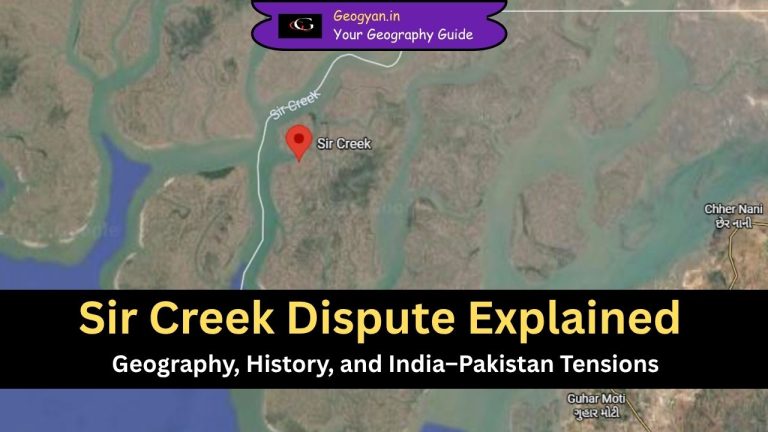Estimated reading time: 4 minutes
Table of contents
Introduction
The concept of landscape has always been a fundamental part of traditional geography. In German, the word ‘Landschaft’ is used to mean landscape. This term encompasses the comprehensive view of a region, including its physical features, vegetation, water bodies, human land use, and other physical and human elements.
German Perspective
German geographers have used the term ‘Landschaft’ in different ways, leading to some confusion. In Germany, ‘Landschaft’ usually has two meanings:
- It describes the general visual appearance of an area.
- It refers to a bounded region.
The first meaning is captured by the word landscape, while the second is conveyed through the terms region or area. Thus, ‘Landschaft’ includes the collection of visible elements and can also denote a specific region or political territory, making the concept broad and somewhat unclear.
American Perspective
American geographer Carl O. Sauer elaborated extensively on the concept of the landscape. He introduced this idea to English-speaking countries and detailed it in his 1925 book, “The Morphology of Landscape.” Sauer used the term ‘landscape’ in the same way as the German ‘Landschaft,’ applying it to both the collection of visible elements and regions. Hartshorne noted that Sauer’s ideas about landscapes closely aligned with those of German geographers like Hettner and Schlüter.
Classification of Landscapes
Sauer divided landscapes into two categories:
- Natural Landscape: Made up of the aggregate forms of natural elements.
- Cultural Landscape: Consisting of the aggregate forms of human-created elements.
In this classification, a purely natural landscape is entirely shaped by nature, while a cultural landscape is shaped or modified by humans. Therefore, a completely natural landscape is impossible in areas inhabited or accessed by humans. In geography, the Earth’s surface is studied as a human habitat, making the study of cultural landscapes particularly significant.
Understanding Cultural Landscapes
Studying cultural landscapes helps us understand how human activities shape the current landscape of the Earth’s surface. Carl Sauer provided a comprehensive explanation of cultural landscapes, laying the foundation for cultural geography.
Components of Natural and Cultural Landscapes
Natural Landscape Components:
- Mountains, plateaus, plains
- River valleys, glaciers, seas
- Marine waves and currents
- Coral reefs, volcanoes
Cultural Landscape Components:
- Human-made structures: houses, settlements (rural and urban)
- Population distribution, density, composition, migration, and growth
- Transportation: roads, railways, trams, cable cars, buses, taxis, trucks, trains, ships, aircraft, helicopters, carts, rickshaws, bullock carts
- Agriculture: fields, crops, barns, orchards, pastures, compost pits, ponds, wells, public lands
- Industry: small-scale and large-scale industries, factories, workshops, industrial colonies, production units
- Mining: mining and quarrying activities and landscapes
- Electricity and communication: power plants, poles and wires, substations, radars, telephone poles and wires, radio and television towers
- Trade: shops, markets, exchange centers
- Social, cultural, and political institutions: educational institutions, government offices, religious places (temples, mosques, churches, gurdwaras), hospitals, courts, police stations, military camps
Conclusion
A cultural landscape is a testament to the indelible human impact on the Earth’s surface. Its development is closely linked with human progress. As human civilization advances, so do knowledge and needs, leading to increasing exploitation and modification of the natural environment to meet these needs. Consequently, cultural landscapes continue to expand. The components of cultural landscapes can be classified into several categories, each reflecting different aspects of human influence on the environment.
FAQs
A cultural landscape refers to a geographic area that includes human-made elements. These elements are shaped by human activities and reflects the interactions between people and their environment.
Cultural landscapes are significant in geography because they help us understand the extent to which human activities shape the Earth’s surface. They reflect the interactions between humans and their environment and provide insights into the development of human civilization.
Cultural landscapes develop as human civilization advances. As knowledge and needs increase, humans exploit and modify the natural environment to meet their needs. This continuous interaction between humans and their environment leads to the expansion of cultural landscapes.





























